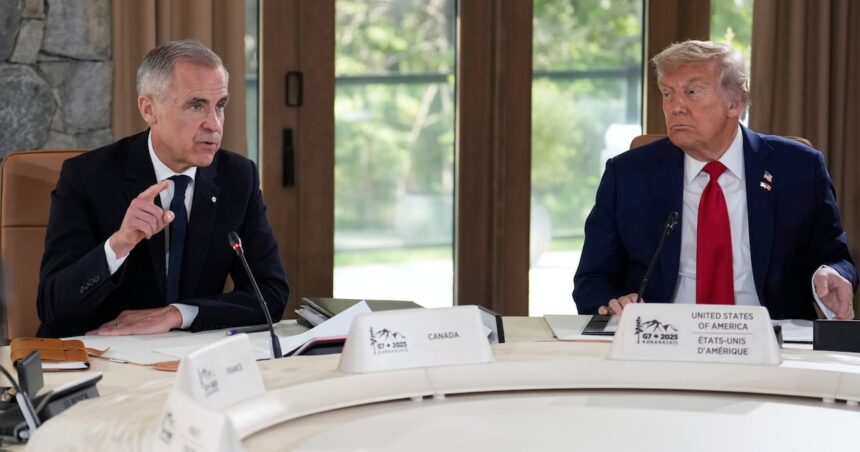The tranquility of summer across Canadian business districts was shattered yesterday as President Trump announced a sweeping 35% tariff threat on all Canadian imports, sending shock waves through North American markets and diplomatic channels alike. The announcement, delivered during an impromptu press conference at his Mar-a-Lago estate, marks a dramatic escalation in what analysts are calling “Trade War 2.0.”
“Canada has been taking advantage of American generosity for decades,” Trump declared. “Their aluminum, steel, and maple syrup have been flooding our markets without fair reciprocity. Starting September 1st, every Canadian product will face a 35% tariff until they negotiate a deal that puts America first.”
This latest salvo comes just months after Trump’s return to office and represents a significant intensification compared to the 2018-2019 trade disputes, when tariffs peaked at 25% on selected goods. The comprehensive nature of the new threat has Canadian officials scrambling to formulate a response.
Prime Minister Freeland responded within hours, calling the threat “reckless and counterproductive” during an emergency press briefing in Ottawa. “Our two economies are deeply integrated, with nearly $2.6 billion in goods and services crossing our border daily. These proposed tariffs would harm Americans as much as Canadians,” she stated.
Economic experts are projecting significant impacts across multiple sectors. The Royal Bank of Canada estimates that implementation of these tariffs could reduce Canadian GDP by 1.8% over the next year, potentially triggering a recession. Industries particularly vulnerable include automotive manufacturing, energy, agriculture, and forestry products.
“This is not 2018 all over again,” explains Dr. Martha Chen, Chief Economist at Toronto Dominion Bank. “The scope and scale of these proposed tariffs represent an existential threat to the integrated North American supply chain developed since NAFTA’s implementation in 1994. Companies with cross-border operations are already revising investment plans.”
Business leaders across Canada have urged immediate high-level negotiations. “We need a diplomatic solution before these threats materialize into actual policy,” said Jean-Marc Tournier, President of the Canadian Chamber of Commerce. “Over 9 million American jobs depend directly on trade with Canada. This isn’t just our problem.”
The announcement has sent the Canadian dollar tumbling, dropping nearly 3% against the U.S. dollar in the largest single-day decline since the COVID-19 pandemic. Stock markets in Toronto, Montreal, and Vancouver similarly experienced sharp selloffs, with the TSX Composite Index falling 4.2%.
Political analysts note that the timing aligns with Trump’s midterm election strategy. “The President is returning to the economic nationalism that energized his base in previous campaigns,” notes Dr. Samantha Wilson, professor of Political Science at McGill University. “Canada makes an easy target because it lacks the retaliatory economic leverage of China or the European Union.”
Canadian officials have indicated they are preparing a proportional response if negotiations fail, including targeted countermeasures on American imports and potential challenges through the USMCA dispute resolution mechanisms and World Trade Organization.
As business leaders, consumers, and policymakers brace for potential economic disruption, the fundamental question remains: Will this aggressive approach yield a more favorable trade relationship, or is North America about to witness the dismantling of one of the world’s most successful economic partnerships?

























